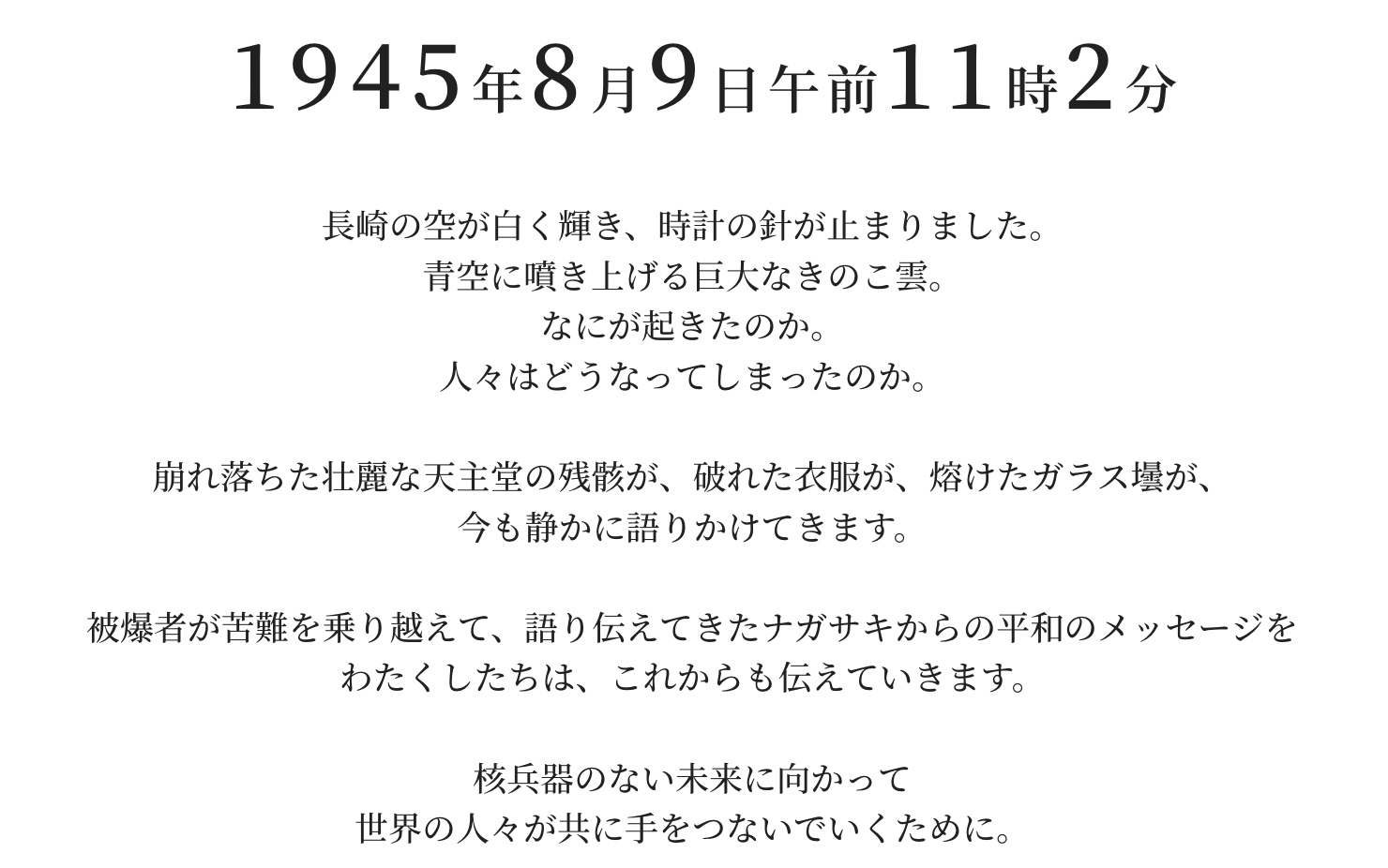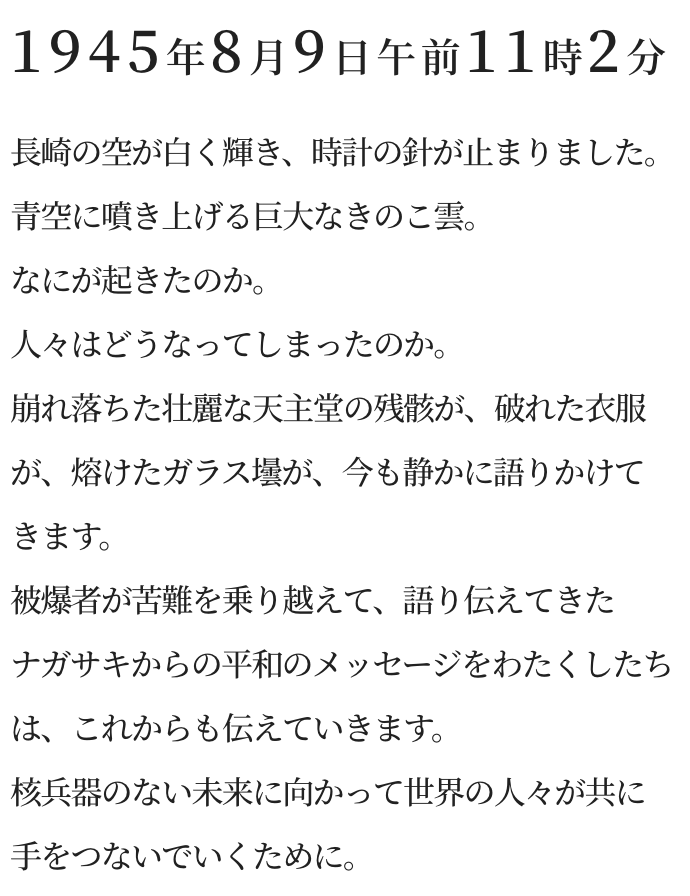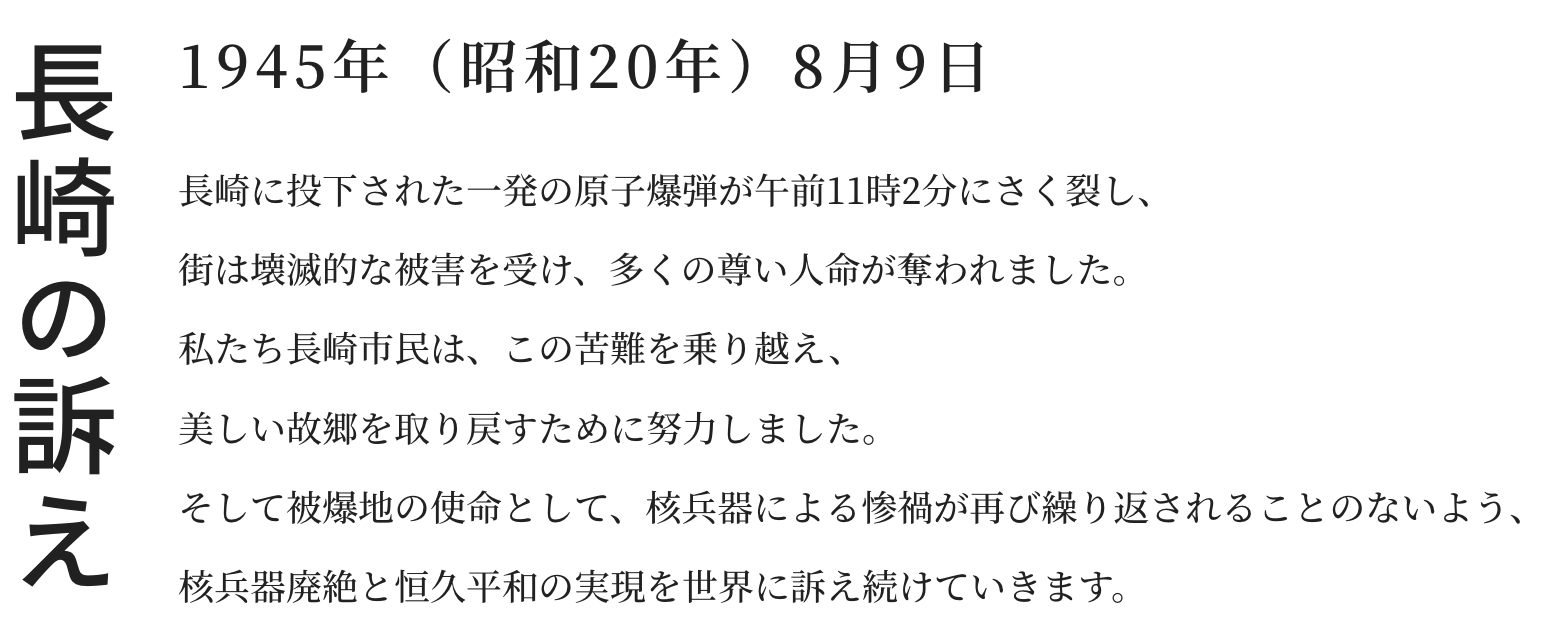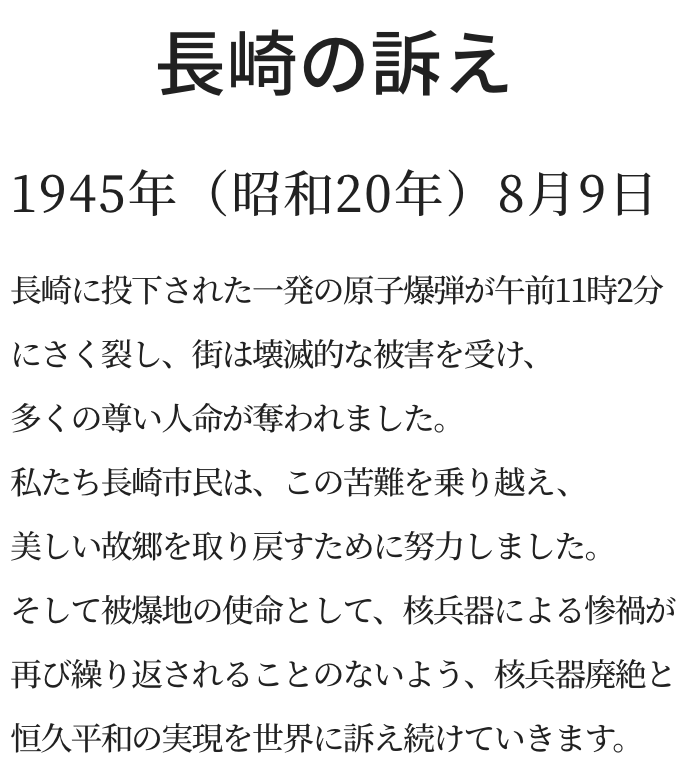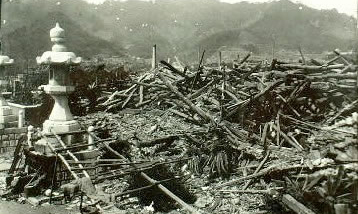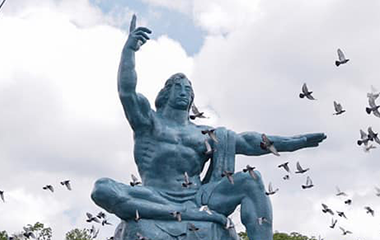ピックアップ
- 訪れる
- 調べる
- 教材
- 動画を見る
- 参加する
-
原爆資料館
利用・展示のご案内
-
その他関連施設
長崎原爆遺跡、立山防空壕、救護所メモリアル、三菱兵器住吉トンネル工場(跡)
-
現代の核問題
核兵器の現状、核兵器データなど
-
修学旅行ガイド
修学旅行で長崎での平和学習をお考えの皆様へ
-
被爆遺構ガイド
被爆建造物など、碑めぐり
-
動画を見る
原爆資料館、永井隆記念館、 旧城山国民学校校舎
-
被爆体験の継承
語り継ぐ被爆体験(家族・交流証言)
-
原爆について
原子爆弾とは、被爆の惨状、被災写真
-
平和学習 資料集
平和学習資料集、平和発信用ガイドブック、紙芝居・絵本、簡易バーチャルGIS
-
平和への取り組み
青少年の活動、祈念行事、平和推進事業
-
キッズ平和ながさき

こどもページ、キッズ平和クイズ
-
ミニミニ原爆展
小スペースで、ヒロシマ・ナガサキ原爆展の開催ができる原爆写真ポスターを提供




